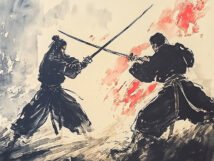Introduction
Silat is a traditional martial art that originated in Southeast Asia and has gained popularity worldwide. It is known for its unique blend of striking, grappling, and self-defense techniques, as well as its emphasis on mental and spiritual development. In this blog post, we will explore the history, philosophy, and benefits of Silat, as well as its practical applications in everyday life.
What is Silat? A Brief Introduction to the Martial Art
Silat is a martial art that originated in the Malay Archipelago, which includes countries such as Indonesia, Malaysia, and Brunei. It is a comprehensive system of self-defense that incorporates strikes, kicks, joint locks, throws, and ground fighting techniques. Silat is known for its fluid and graceful movements, as well as its focus on efficiency and practicality.
There are various types of Silat, each with its own unique characteristics and techniques. Some of the most well-known types include Pencak Silat, which is practiced in Indonesia, and Bersilat, which is practiced in Malaysia. These different styles of Silat have their own distinct techniques and training methods, but they all share a common foundation in self-defense and personal development.
The basic principles of Silat revolve around the concept of "harmony in motion." Practitioners are taught to move in a way that is fluid and efficient, using their opponent's energy against them. Silat also emphasizes the use of angles and leverage to gain an advantage in combat. Overall, Silat is a martial art that combines physical techniques with mental and spiritual development.
The History of Silat: Tracing Its Origins and Evolution
Silat has a rich and diverse history that dates back centuries. It is believed to have originated in the Malay Archipelago, where it was practiced by the indigenous people as a means of self-defense and protection. Over time, Silat evolved and adapted to the various cultures and regions it encountered, resulting in the different styles and variations that exist today.
The exact origins of Silat are difficult to trace, as much of its history has been passed down through oral tradition. However, it is believed to have been influenced by various martial arts from India, China, and the Middle East. These influences can be seen in the techniques and philosophies of Silat, which combine elements of striking, grappling, and weapon-based combat.
Throughout history, Silat has been practiced by warriors, soldiers, and ordinary people alike. It was used as a means of self-defense in times of conflict, as well as a way to maintain physical fitness and mental discipline. Famous Silat practitioners include Hang Tuah, a legendary warrior from Malaysia, and Gajah Mada, a powerful military commander from Indonesia.
The Philosophy of Silat: Understanding Its Core Principles
Silat is not just a physical martial art, but also a philosophy and way of life. It is rooted in the principles of respect, humility, and self-discipline. The core principles of Silat include:
1. Pencak: This refers to the physical aspect of Silat, which involves the techniques and movements used in combat. Pencak emphasizes efficiency, fluidity, and adaptability, allowing practitioners to respond effectively to any situation.
2. Inner Power: Silat teaches practitioners to harness their inner power and energy, known as "tenaga dalam." This involves developing mental focus, breathing techniques, and meditation to enhance physical and mental performance.
3. Harmony: Silat emphasizes the importance of harmony and balance in all aspects of life. Practitioners are taught to seek harmony within themselves, with others, and with the natural world. This philosophy extends to combat, where practitioners aim to neutralize their opponent's energy and achieve a state of balance.
The philosophy of Silat is deeply ingrained in its techniques and training methods. By understanding and applying these core principles, practitioners can not only improve their physical skills but also cultivate a sense of inner peace and harmony.
The Physical Benefits of Silat: How It Can Improve Your Health and Fitness
Silat offers numerous physical benefits that can improve your health and fitness. Some of these benefits include:
1. Strength and Conditioning: Silat training involves a combination of cardiovascular exercises, strength training, and flexibility exercises. This helps to build strength, endurance, and agility, improving overall physical fitness.
2. Coordination and Balance: Silat requires precise movements and coordination between the upper and lower body. Practicing Silat can improve your balance, coordination, and body awareness.
3. Self-Defense Skills: Silat is a practical self-defense system that teaches effective techniques for real-life situations. By learning Silat, you can develop the skills and confidence to protect yourself and others.
Compared to other martial arts, Silat offers a unique blend of striking, grappling, and self-defense techniques. This makes it a versatile and well-rounded martial art that can be adapted to different situations and opponents.
The Mental Benefits of Silat: Enhancing Your Focus, Discipline, and Confidence
In addition to its physical benefits, Silat also offers numerous mental benefits. Some of these benefits include:
1. Focus and Concentration: Silat requires mental focus and concentration to execute techniques with precision and timing. By practicing Silat, you can improve your ability to focus and concentrate, both in training and in everyday life.
2. Discipline and Self-Control: Silat training requires discipline and self-control to master the techniques and adhere to the principles of the martial art. This discipline can be applied to other areas of life, helping you to develop self-discipline and self-control.
3. Confidence and Self-Esteem: Silat training can boost your confidence and self-esteem. As you progress in your training and master new techniques, you will gain a sense of accomplishment and self-confidence.
The mental benefits of Silat extend beyond the training mat. The focus, discipline, and confidence developed through Silat can be applied to other areas of life, such as work, relationships, and personal goals.
The Spiritual Dimension of Silat: Connecting Mind, Body, and Soul
Silat is not just a physical and mental practice, but also a spiritual one. It emphasizes the connection between mind, body, and soul, and seeks to cultivate a sense of inner peace and harmony. Some of the ways in which Silat connects mind, body, and soul include:
1. Meditation and Breathing Techniques: Silat incorporates meditation and breathing techniques to calm the mind, improve focus, and connect with the inner self. These practices help to cultivate a sense of inner peace and harmony.
2. Energy and Flow: Silat teaches practitioners to harness their inner energy and flow with the movements of their opponent. This requires a deep connection between mind, body, and soul, and helps to cultivate a sense of unity and oneness.
3. Respect for Nature: Silat emphasizes the importance of respecting and connecting with the natural world. Practitioners are taught to be mindful of their surroundings and to live in harmony with nature.
The spiritual dimension of Silat is a personal journey that each practitioner embarks on. It is a path of self-discovery and self-transformation, where one seeks to find balance and harmony within themselves and with the world around them.
Silat Techniques and Training: Mastering the Art of Self-Defense
Silat techniques are diverse and encompass a wide range of strikes, kicks, joint locks, throws, and ground fighting techniques. Some of the techniques used in Silat include:
1. Strikes: Silat incorporates various strikes, such as punches, elbows, and knee strikes. These strikes are delivered with speed, precision, and power, making them effective in self-defense situations.
2. Kicks: Silat includes a variety of kicks, including front kicks, roundhouse kicks, and spinning kicks. These kicks are executed with flexibility and accuracy, allowing practitioners to strike their opponents from different angles.
3. Joint Locks and Throws: Silat utilizes joint locks and throws to control and immobilize opponents. These techniques involve manipulating the joints and using leverage to gain an advantage in combat.
Training in Silat involves a combination of solo drills, partner drills, and sparring. Solo drills help to develop technique, speed, and power, while partner drills and sparring allow practitioners to apply their skills in a controlled environment. Regular training and practice are essential to mastering the techniques and principles of Silat.
Silat as a Way of Life: Applying Its Lessons to Everyday Challenges
Silat is not just a martial art, but also a way of life. Its principles and philosophies can be applied to everyday challenges and situations. Some of the ways in which Silat can be applied to everyday life include:
1. Conflict Resolution: Silat teaches practitioners to seek harmony and balance in all aspects of life, including conflicts and disagreements. By applying the principles of Silat, such as respect, humility, and self-control, you can resolve conflicts in a peaceful and constructive manner.
2. Stress Management: Silat training involves physical and mental challenges that can help you develop resilience and cope with stress. By applying the principles of Silat, such as focus, discipline, and self-control, you can manage stress more effectively and maintain a sense of inner peace.
3. Personal Growth: Silat is a journey of self-discovery and self-transformation. By applying the principles of Silat, such as self-discipline, perseverance, and self-reflection, you can overcome obstacles, achieve personal growth, and reach your full potential.
Silat and Personal Growth: Overcoming Obstacles and Achieving Goals
Silat can be a powerful tool for personal growth and self-improvement. It teaches valuable lessons in perseverance, discipline, and resilience, which can help you overcome obstacles and achieve your goals. Some of the ways in which Silat can help with personal growth include:
1. Overcoming Fear: Silat training involves facing and overcoming fear. By pushing yourself outside of your comfort zone and facing challenges head-on, you can develop courage and overcome your fears.
2. Building Resilience: Silat training requires perseverance and resilience. By pushing through physical and mental challenges, you can develop resilience and the ability to bounce back from setbacks.
3. Setting and Achieving Goals: Silat teaches the importance of setting goals and working towards them. By setting goals in your Silat training and applying the principles of discipline and perseverance, you can achieve personal growth and success.
The Future of Silat: Its Role in Modern Society and Its Global Impact
Silat has gained popularity worldwide and continues to grow as a martial art. Its practical self-defense techniques, as well as its emphasis on mental and spiritual development, make it relevant in modern society. Some of the ways in which Silat is shaping the future include:
1. Self-Defense and Personal Safety: Silat provides practical self-defense skills that are relevant in today's world. As people become more concerned about personal safety, the demand for self-defense training, including Silat, is likely to increase.
2. Health and Fitness: Silat offers a unique and effective way to improve health and fitness. As people become more health-conscious, the demand for martial arts training, including Silat, as a form of exercise is likely to grow.
3. Cultural Exchange and Globalization: Silat is not just a martial art, but also a cultural practice. As people from different cultures and backgrounds come together, the exchange of martial arts, including Silat, helps to promote cultural understanding and appreciation.
The future of Silat is bright, as it continues to evolve and adapt to the needs and interests of modern society. Its practical applications, as well as its emphasis on personal development, make it a valuable martial art for people of all ages and backgrounds.
Conclusion
In conclusion, Silat is a traditional martial art that offers numerous physical, mental, and spiritual benefits. Its unique blend of striking, grappling, and self-defense techniques, as well as its emphasis on mental and spiritual development, make it a well-rounded martial art that can be applied to everyday life. Whether you are looking to improve your health and fitness, enhance your focus and discipline, or achieve personal growth and self-improvement, Silat offers a path to self-discovery and self-transformation. So why not give Silat a try and experience the many benefits it has to offer?














